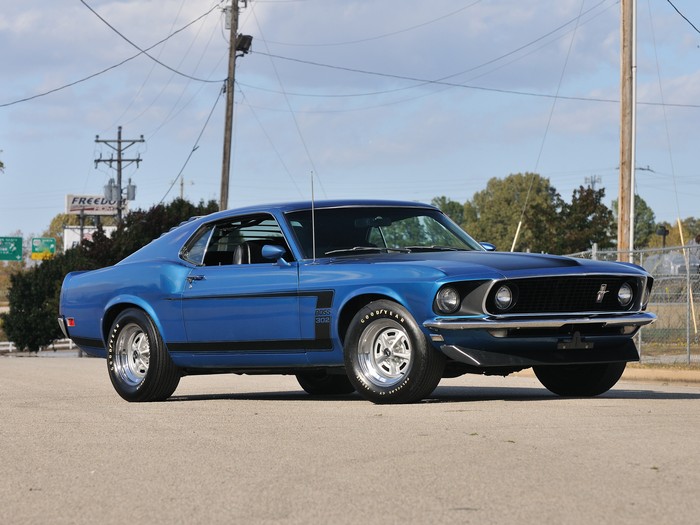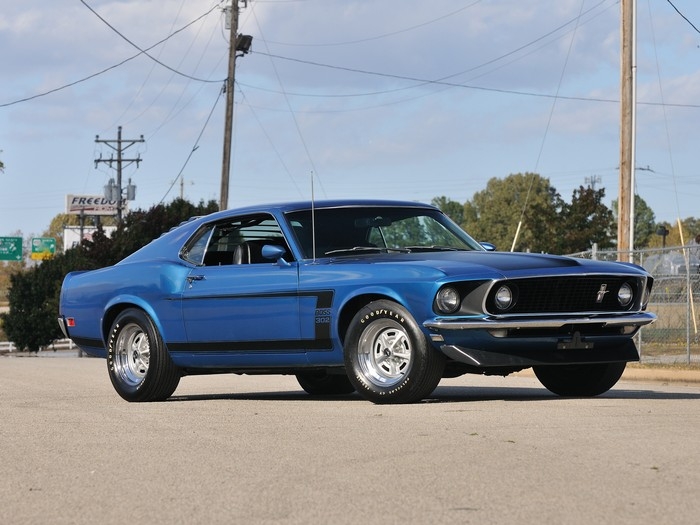
• Believed to be 17,000 actual miles
• Boss 302 matching-numbers engine
• 4-speed transmission, 3.50 Posi rear end
• Documented by the invoice, Protect-O-Plate, warranty card, Elite Marti Report, original drive-out tag, metal dealership tag
• Acapulco Blue with black interior
• Power steering and brakes
• Argent Gray Magnum wheels, rear window louvers
• F-60-15 Goodyear polyglas raised white-lettertires
• All components still intact, smog system, blow-up spare tire, shifter and ball, console, mostly original paint, interior, chrome and stainless
• Last tagged in 1982, Boss 302 registry report
• Late-built car July 1969 and sold new in September 1969, making it one of the last ’69 Boss 302s built

